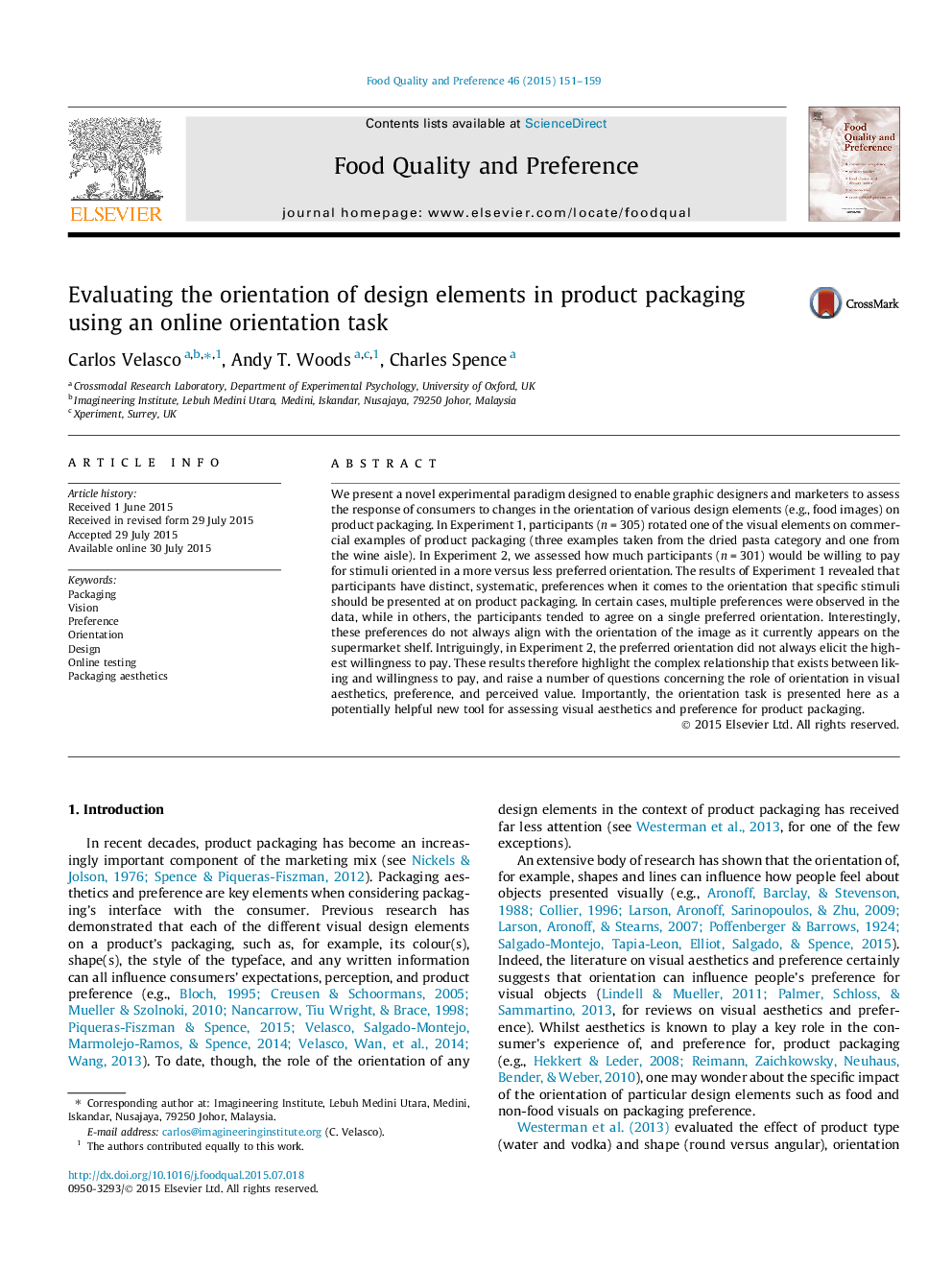| Article ID | Journal | Published Year | Pages | File Type |
|---|---|---|---|---|
| 4316960 | Food Quality and Preference | 2015 | 9 Pages |
•We present the orientation task in the context of packaging design.•Participants’ orientation preferences and willingness to pay are evaluated.•Preferences do not always align with currently used orientations.•There is a complex link between orientation preference and willingness to pay.•The task can provide relevant insights on packaging aesthetics and preference.
We present a novel experimental paradigm designed to enable graphic designers and marketers to assess the response of consumers to changes in the orientation of various design elements (e.g., food images) on product packaging. In Experiment 1, participants (n = 305) rotated one of the visual elements on commercial examples of product packaging (three examples taken from the dried pasta category and one from the wine aisle). In Experiment 2, we assessed how much participants (n = 301) would be willing to pay for stimuli oriented in a more versus less preferred orientation. The results of Experiment 1 revealed that participants have distinct, systematic, preferences when it comes to the orientation that specific stimuli should be presented at on product packaging. In certain cases, multiple preferences were observed in the data, while in others, the participants tended to agree on a single preferred orientation. Interestingly, these preferences do not always align with the orientation of the image as it currently appears on the supermarket shelf. Intriguingly, in Experiment 2, the preferred orientation did not always elicit the highest willingness to pay. These results therefore highlight the complex relationship that exists between liking and willingness to pay, and raise a number of questions concerning the role of orientation in visual aesthetics, preference, and perceived value. Importantly, the orientation task is presented here as a potentially helpful new tool for assessing visual aesthetics and preference for product packaging.
